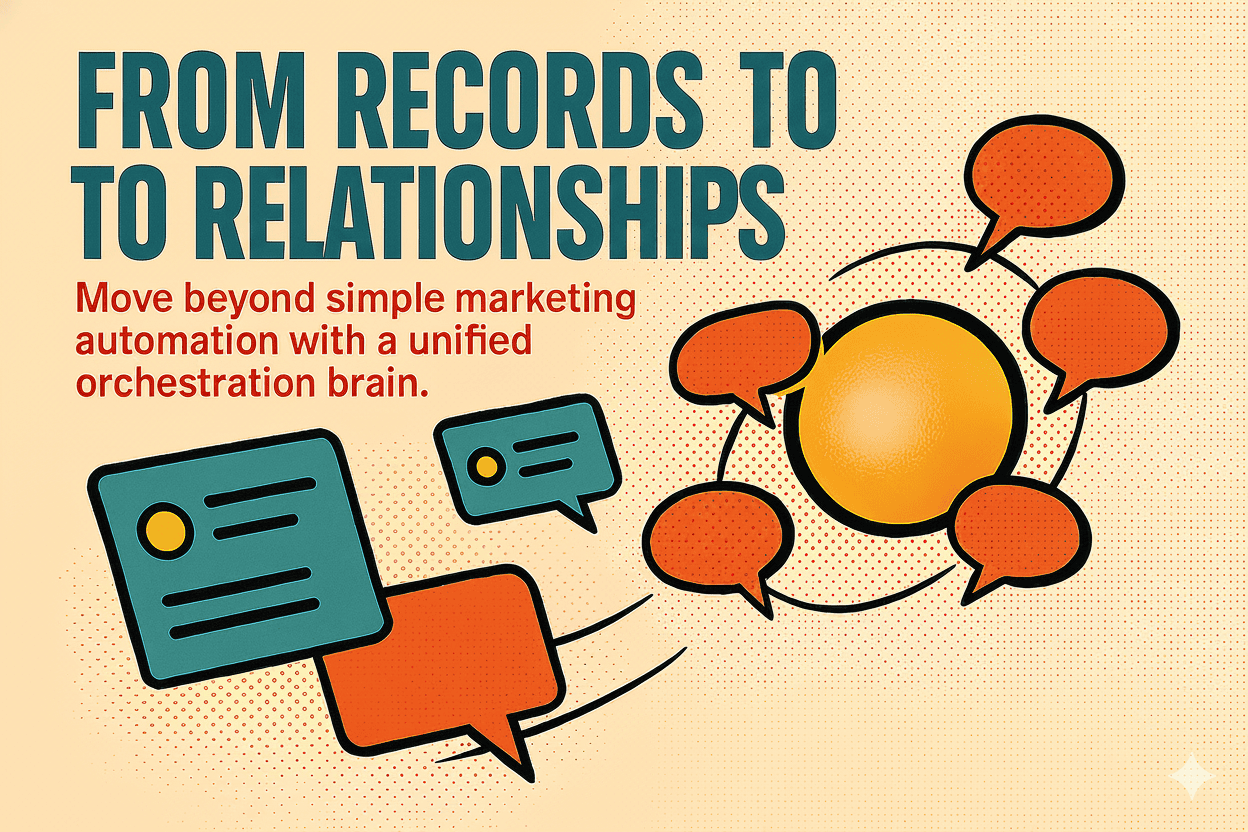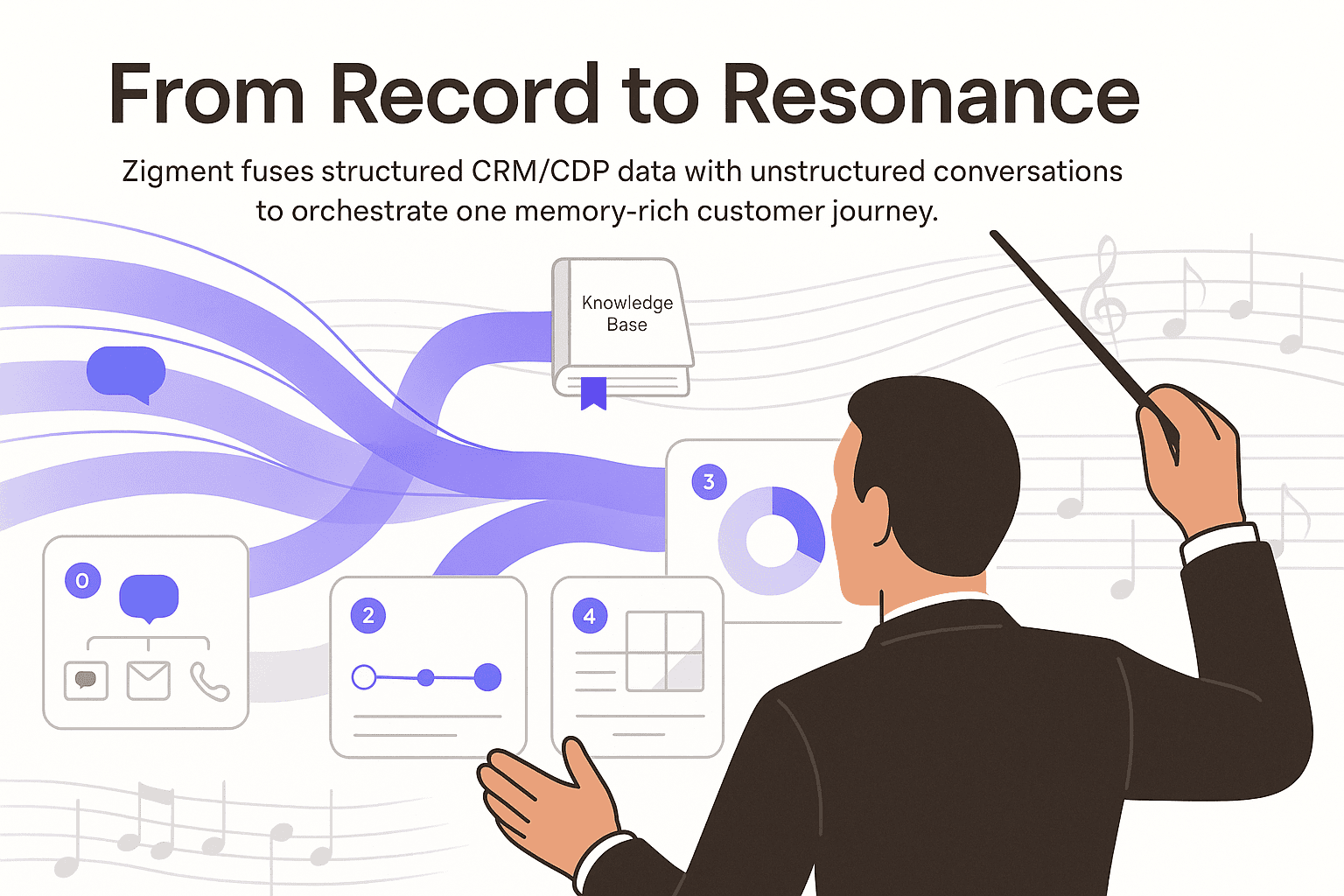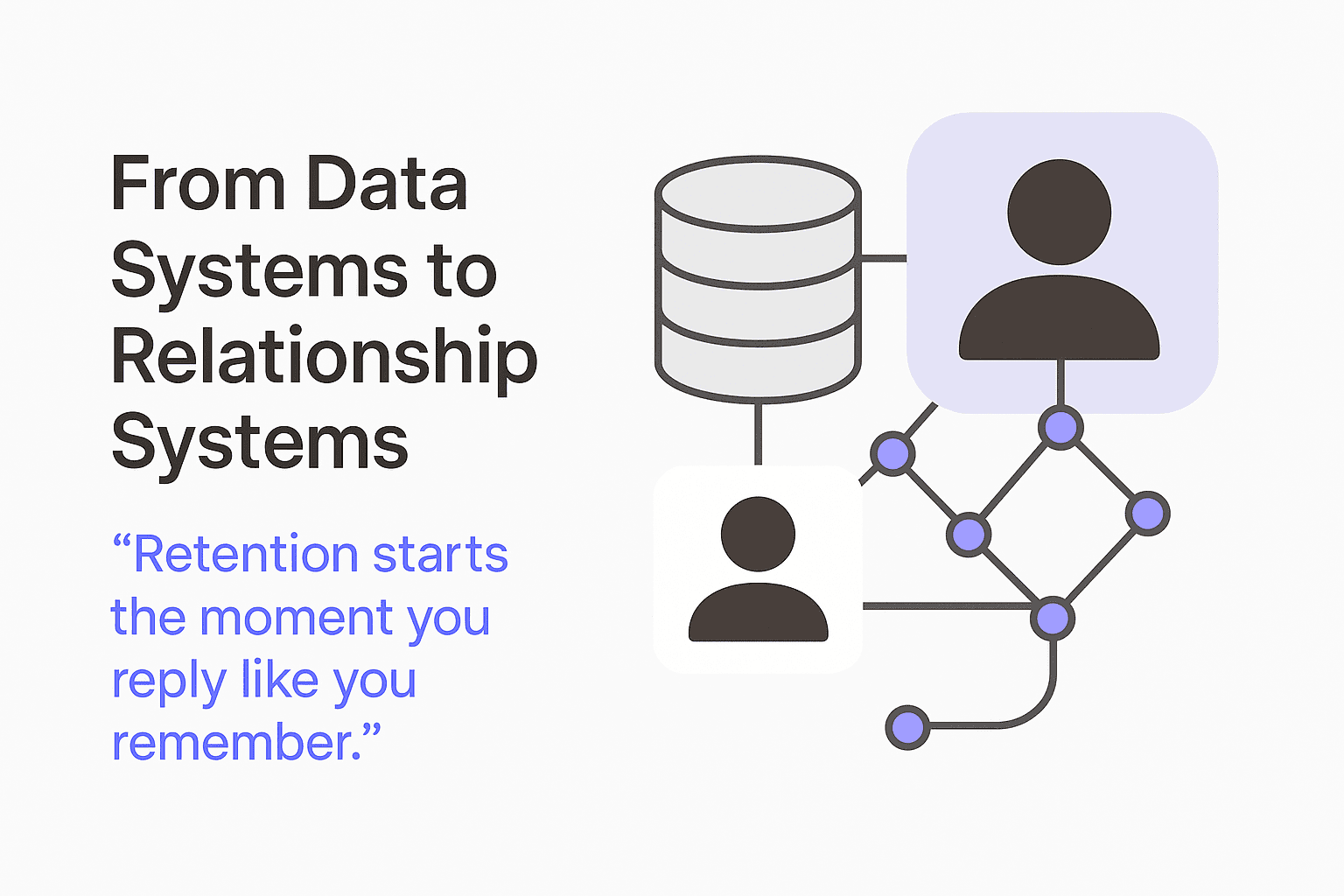From Data to Dialogue: Why the Future Belongs to Intelligent Orchestration Systems

Most companies today have a CRM or CDP at the heart of their stack.
It is their system of record, neatly organizing structured data about who the customer is, what they have done, and what they might do next.
But here is the challenge: while systems of record can log and segment behavior beautifully, they cannot truly understand context.
They store structured data such as forms, clicks, and transactions, but the unstructured signals like voice calls, WhatsApp chats, emails, and social interactions live elsewhere.
Each system manages its own channel, each vendor builds its own logic, and each department runs its own version of “the customer.”
The result?
Your customer might look consistent in dashboards, but the experience still feels disjointed.
That is where Zigment steps in.
The Problem With Systems of Record
Traditional systems were built to record, not to remember.
Here is what most enterprise stacks look like today:
- Quantitative behavior, such as page views, purchases, and app login,s lives inside your CRM or CDP.
- Qualitative context, such as emails, WhatsApp chats, and call transcripts, is scattered across communication tools.
- Knowledge banks like FAQs, support articles, and documents stay static and unlinked from live conversations.
- Engagement flows are rebuilt separately for each channel, with no shared thread of understanding.
The outcome?
Journeys that are technically automated but emotionally disconnected.
Systems of record excel at capturing what happened.
But they struggle to understand why it happened or how to respond next.

Zigment: From System of Record to System of Intelligent Orchestration
Zigment does not replace your CRM or CDP. It upgrades it with a living, learning orchestration layer.
It bridges the gap between structured data (what your systems know) and unstructured interactions (what your customers say, ask, and feel).
By stitching every click, chat, call, and email into one unified view, Zigment transforms static data into dynamic context.
Unified Conversation Layer
Zigment connects behavioral signals from your CDP with real conversational data from WhatsApp, email, calls, and even social DMs.
You are not building isolated campaigns anymore. You are orchestrating one continuous, memory-driven journey.
Knowledge-Powered Engagement
When customers ask questions, Zigment draws from your knowledge repositories, not just canned responses, to provide accurate and contextual answers across channels.
Cross-Channel Continuity
A conversation that starts on WhatsApp, continues over email, and ends on a call does not lose context. Zigment keeps the narrative intact.
Personalization That Compounds
With orchestration happening centrally, personalization does not reset at every channel. It compounds across the customer lifecycle.
What That Looks Like in Practice
Automotive
A prospect fills out a form for a test drive. That structured data is captured by the CRM.
They browse the red variant of a model and explore financing options. That structured behavioral data goes into the CDP.
Weeks later, they chat on WhatsApp about buying the car for their wife in Bombay. That is unstructured conversational data.
In most stacks, these signals never meet. The CRM knows their lead score but not their sentiment. The WhatsApp tool knows their message but not their context.
With Zigment, every signal merges into a single intelligent customer profile.
Three months later, as Diwali approaches, the prospect receives a personalized offer: red variant, tailored finance, and a gift accessory pack for his wife.
That is not automation. That is orchestration that remembers.
EdTech
A parent attends one free trial class and drops off.
They later email about certification value while their child sporadically opens WhatsApp reminders.
In a traditional stack, these touchpoints sit in silos. One in CRM, one in email, one in WhatsApp analytics.
With Zigment, structured and unstructured signals converge.
The system understands hesitation, references the right accreditation article, and sends a timely scholarship nudge personalized to intent, not just behavior.
Healthcare
A patient downloads a wellness app after being referred by their doctor. That is structured referral data.
They email support about insurance coverage and call about lab test eligibility. That is unstructured conversational data.
Zigment threads these interactions into one flow.

The next WhatsApp message references their doctor’s referral, answers their insurance query, and nudges them to schedule a lab visit while automatically updating the CRM with the entire context.
It is not just connected. It is continuously aware.
Why This Matters
Systems of record tell you who your customers are.
Systems of intelligent orchestration show you who they are becoming.
Customers do not care about your stack architecture.
They care that your brand remembers them across every touchpoint, in every context.
Zigment ensures your CDP is not just a storage system. It becomes an orchestration brain that unifies structured and unstructured data into one coherent narrative.
- Timing feels natural (context-driven, not rule-based).
- Content feels relevant (informed by both data and dialogue).
- Conversations feel personal (powered by intelligence, not templates).

The Future of Engagement
The next evolution of the customer stack is not about adding more systems of record.
It is about creating systems that can think across them.
Zigment bridges that gap, turning static data into a living context and fragmented interactions into continuous journeys.
Because the future is not about managing records.
It is about orchestrating relationships.
